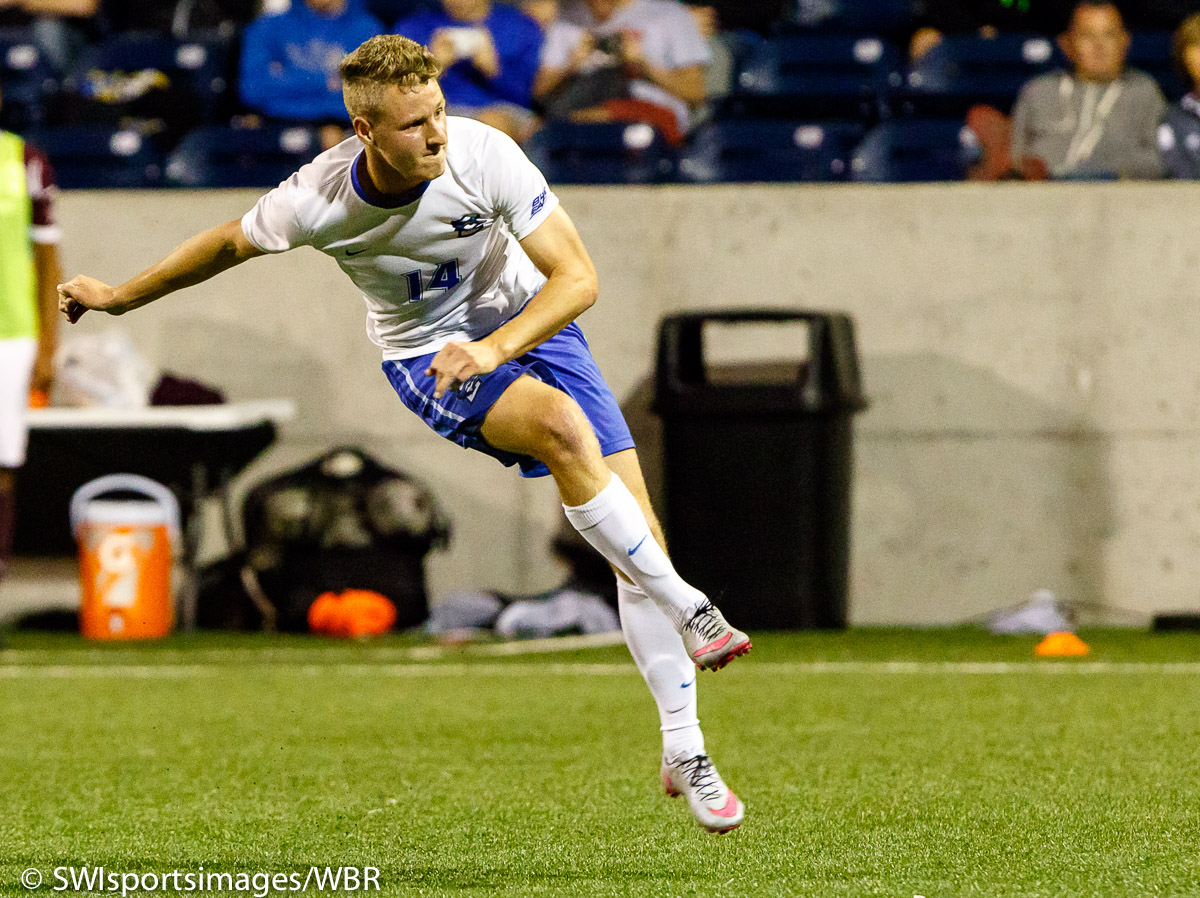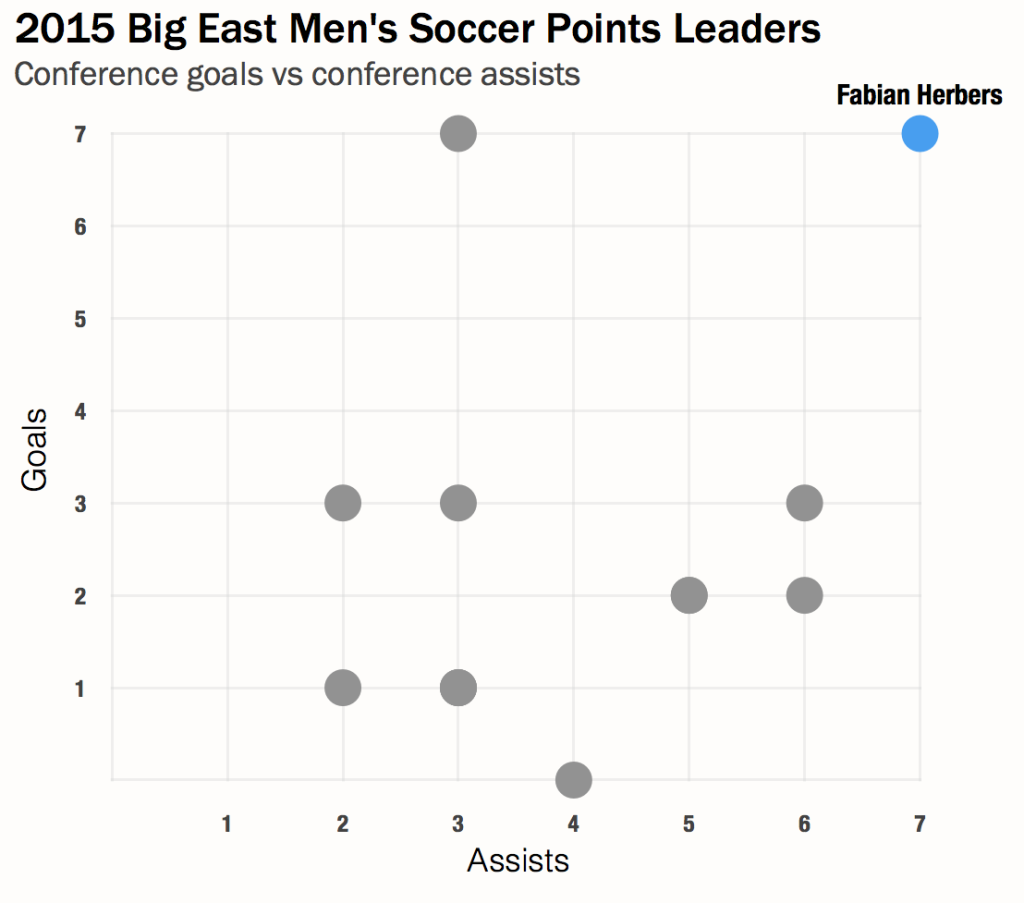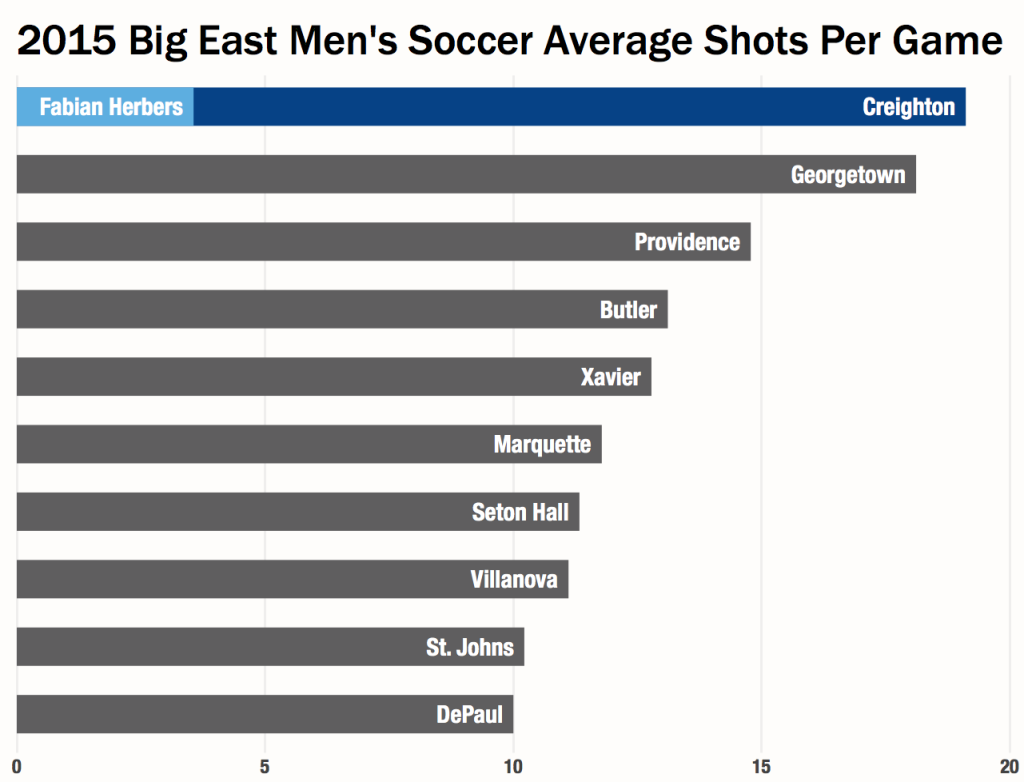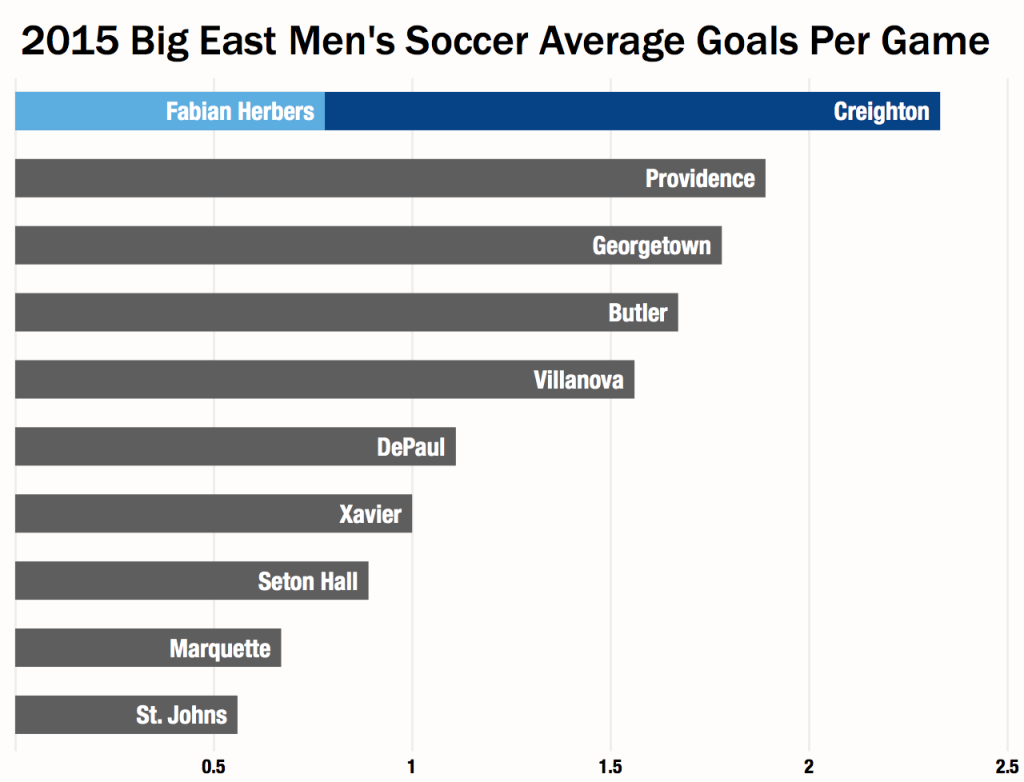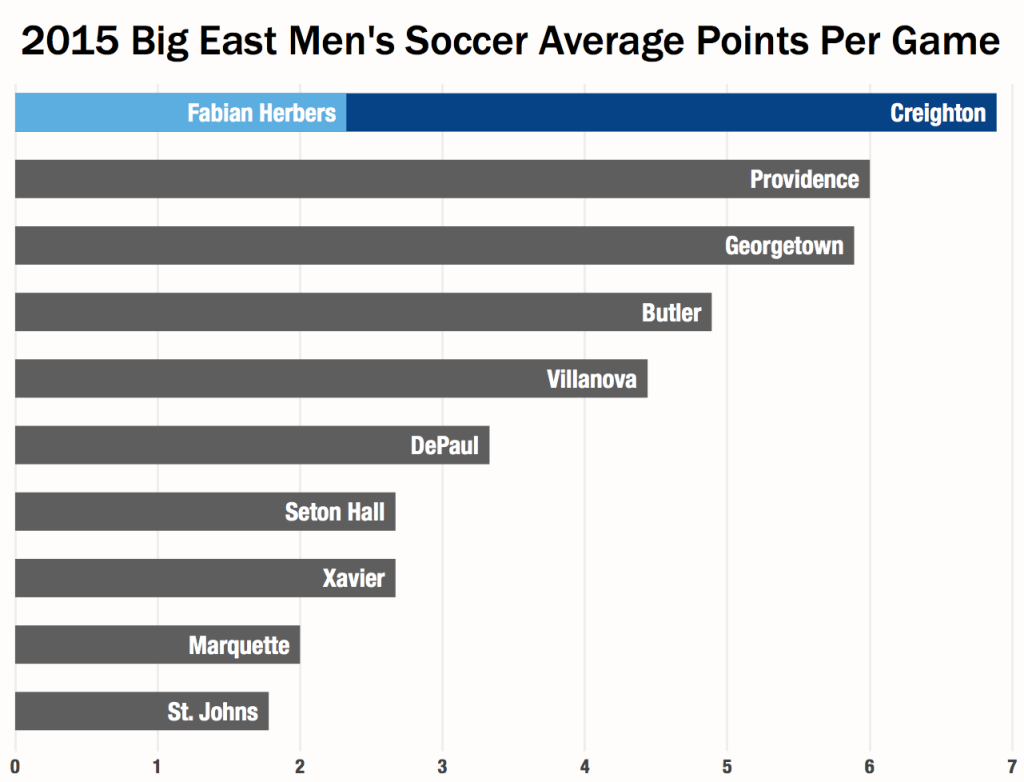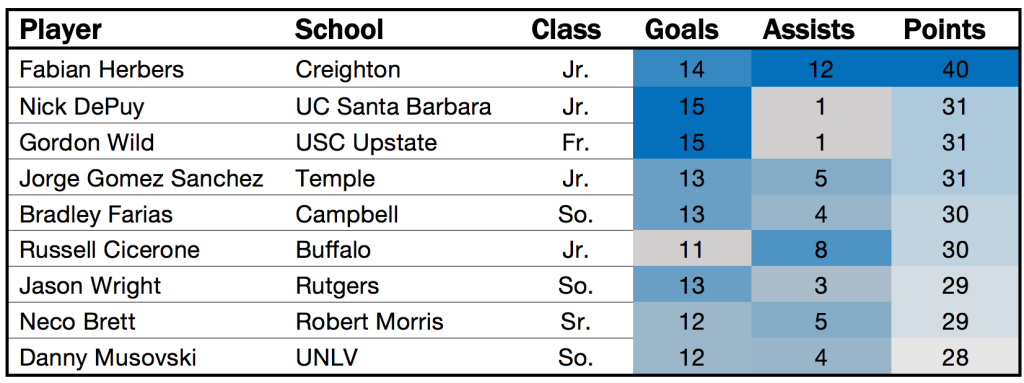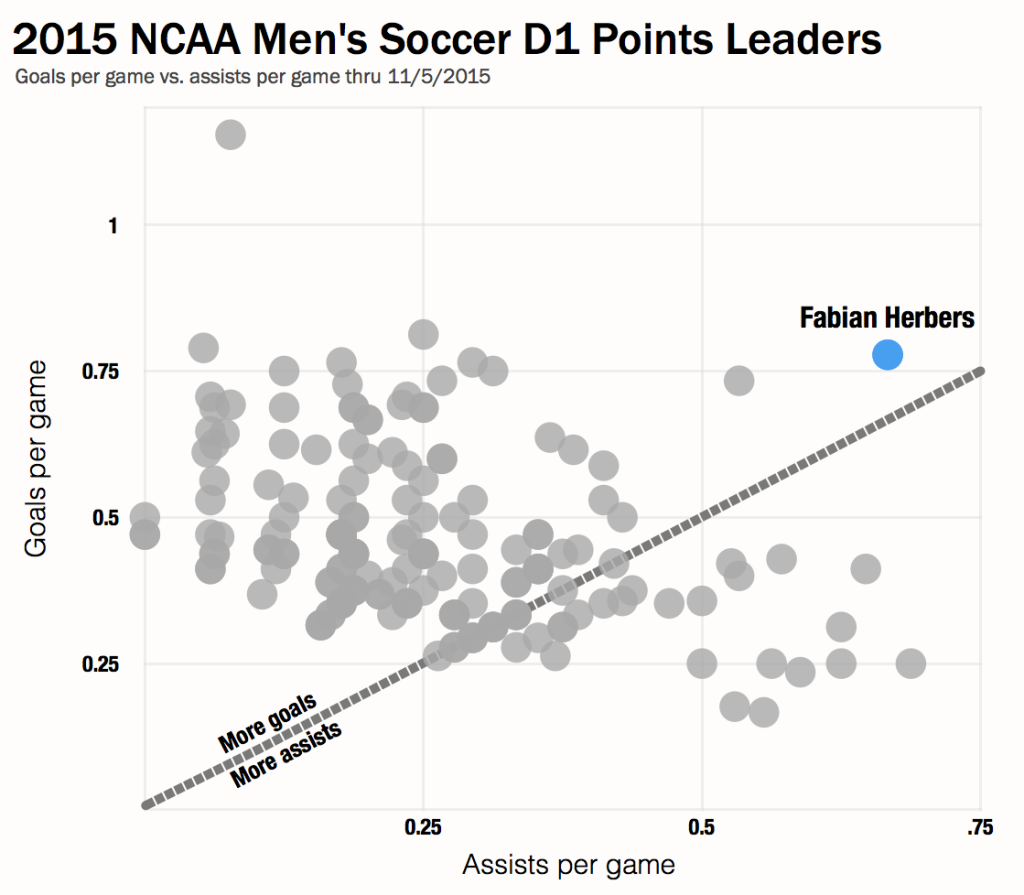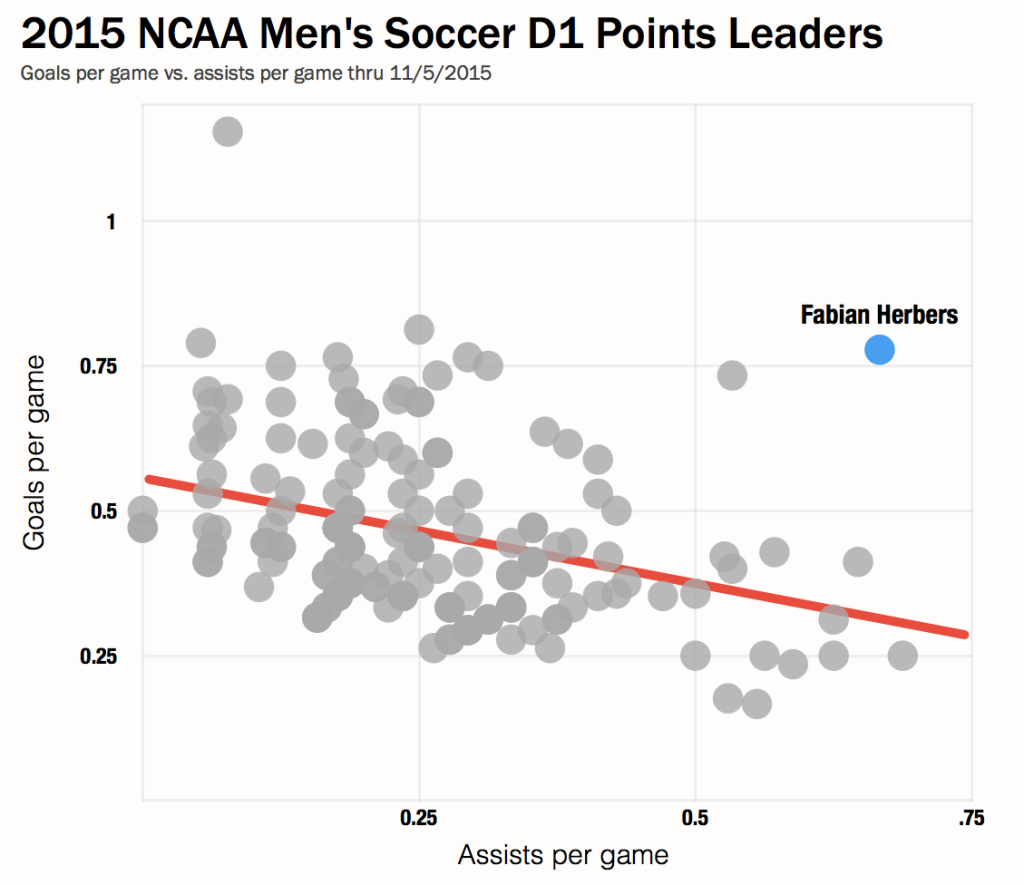Last week Creighton junior forward Fabian Herbers earned Big East Offensive Player of the Year honors for the second year in a row. Was this the right call by the Big East? Perhaps there was someone else more deserving of the award?
The answer to that question should be blindingly obvious to anyone who has remotely followed Creighton soccer this year. Fabian was miles ahead of second place in the race for BE Offensive Player of the Year as seen in the graph above. Herbers had 7 goals and 7 assists during conference play, well above and beyond what any other Big East player was able to muster.
As alluded to earlier, anyone who has followed Creighton men’s soccer this year knows about the special season the program is having. It’s hard to anticipate if the team will ever go eight straight week as #1 in the country again. Herbers is also having a special season and has played a significant role in Creighton’s dominance throughout the year.
But just how significant has Herbers been to Creighton? After all, he is just one of eleven players on the field. I’m a “the proof is in the data” guy, so I naturally began looking at some season statistics. While many people enjoy looking at stats already, it is my belief that you sometimes need to combine stats in different ways to gain new insights. Herbers has had a profound impact on the Bluejays this season, and I think the stats below back that up.
First things first – shots (shots shots shots, shots shots shots shots shots, shots shots shots shots shots, shots shots EVERYBODY! — sorry about that, force of habit). You would expect the reigning Big East Offensive Player of the year to take a lot of shots. Herbers more than delivered his fair share of shots for the Jays, ripping 4.33 shots per game, roughly 22% of the Jays’ nation-leading 19.33 shots per game.
Next, you would expect someone who takes a lot of shots to score a lot of goals. Once again Herbers delivered with .78 goals per game on average, good for 33% of the Jays’ goals.
Finally, you would expect someone that scores a lot of goals to do well on a points per game basis. Herbers averaged 2.22 points per game, again good for about 33% of the Jay’s total points per game average. The most striking takeaway from this particular statistic is that on average, Herbers contributed more points per game than Marquette and St. Johns got as a team. Crazy good.
A Very Offensive Player
The regular season is now over and although Jays fans may be upset by the “2” in the loss column, they can find comfort in a different number. That number is 40, and it represents the number of points Fabian Herbers has racked up this season. For those unfamiliar, the point system in college soccer works like this – a player receives two points for a goal and one point for an assist. Forty points is good for #1 in the country (through November 5) and, like the race for the Big East Offensive POY, second place wasn’t even close.
Herbers’ 40 points are comprised of 14 goals and 12 assists. His goal total puts him in second place nationally, and his assist total puts him alone at the top. What’s ridiculous is he is the only player in both top tens. Normally a team would enjoy having just one player in any given season that gets to either 10 goals or 10 assists. To have a player hit double digits in both categories is borderline absurd. Fabian Herbers is a very offensive player.
#HerbersforHermann
A typical recipe for winning the Hermann Trophy (college soccer’s Heisman equivalent) combines a prolific offensive player with a top-five team. It appears as though Creighton has the right recipe this year. Regardless of how well the Jays do in the postseason, I’d argue Herbers deserves the Hermann Trophy for his regular season performance. At least statistically speaking.
Here’s my case. Below is a scatterplot of point scorers in NCAA D1 men’s soccer who had at least 15 points this regular season (there are 164 players in all). These are the best offensive players in college soccer. The X axis (horizontal) shows assists per game while the Y axis (vertical) shows goals per game (not every team played the same number of games, so I calculated per game stats to normalize). The dashed line down the middle represents a player that scores 1 goal for every 1 assist they make. If a player is above the line, it means they made more goals than assists this season, and if they’re below the line, they made more assists than goals.
I’ve highlighted Fabian in blue. We can see that he makes marginally more goals than assists because he is just above the line. Looking at the rest of the data, it’s easy to observe a clear dichotomy between goal scorers and assist makers.
Now let’s look at the same graph in a different way. The line in red represents a linear trend in the data. What it’s telling us is pretty simple – players who have more assists generally score fewer goals (and vice versa). One major exception, of course, is Fabian. He is quite the outlier in this graph, sitting well above the trend line. Now I’m not saying this graph is absolute proof that Herbers deserves the Hermann Trophy — but I think it may be a good indication of whose name could be announced at the award banquet on January 8. If Creighton remains one of the most dominant teams in the country, Herbers ought to have plenty of opportunities this postseason to add to his already outrageous offensive points tally.

